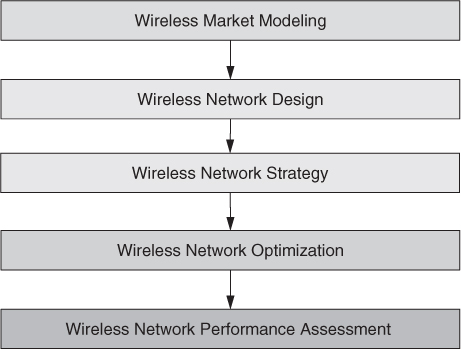Chapter 16
Wireless Network Design
16.1 Introduction
The design of a wireless network is a complex task that requires an in-depth knowledge of:
- RF propagation
- wireless technology
- equipments, software and rf components
- data protocols
- market modeling
- wireless design and optimization tools
It takes many years for an engineer to develop all these skills. The first chapters of this book gave the basic principles behind wireless technologies, described in detail wireless broadband networks, and explained how to model market and services.
A set of specialized tools is required to perform all these tasks. These tools should be able to consider all the intricacies of a wireless design.
The design tasks can be grouped in four main phases as shown in Figure 16.1. Each phase is described in detail in the following chapters.
Figure 16.1 Design phases.

These phases are applicable either to a greenfield or an operational network. They can be applied to network expansions and should be revised periodically to accommodate changes in traffic.
Real life statistics from operational systems can be applied to further enhance the network modeling. It is even possible to detect equipment hardware and software issues by comparing predicted and measured statistics. Figure 16.2 shows how this feedback is done over the life of the network.
Figure 16.2 Prediction and operational data interaction.
16.2 ...

